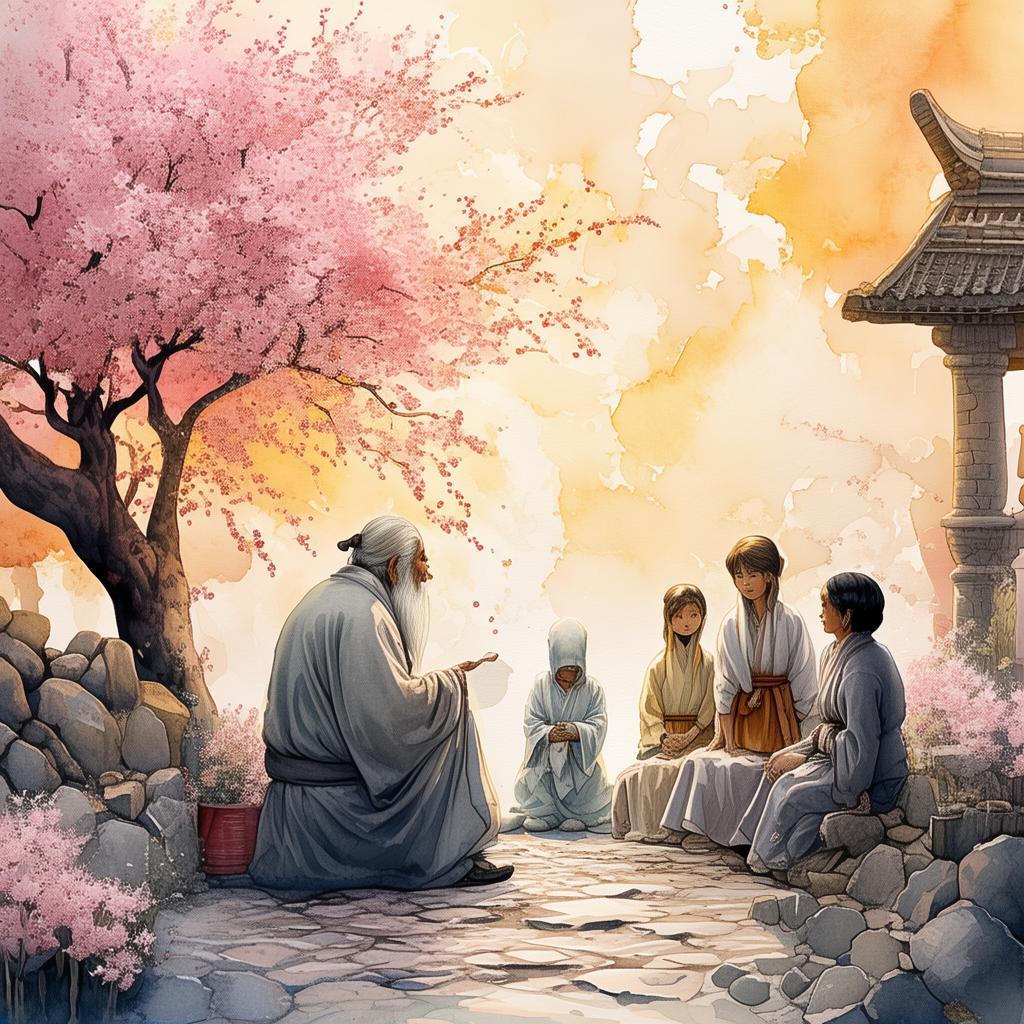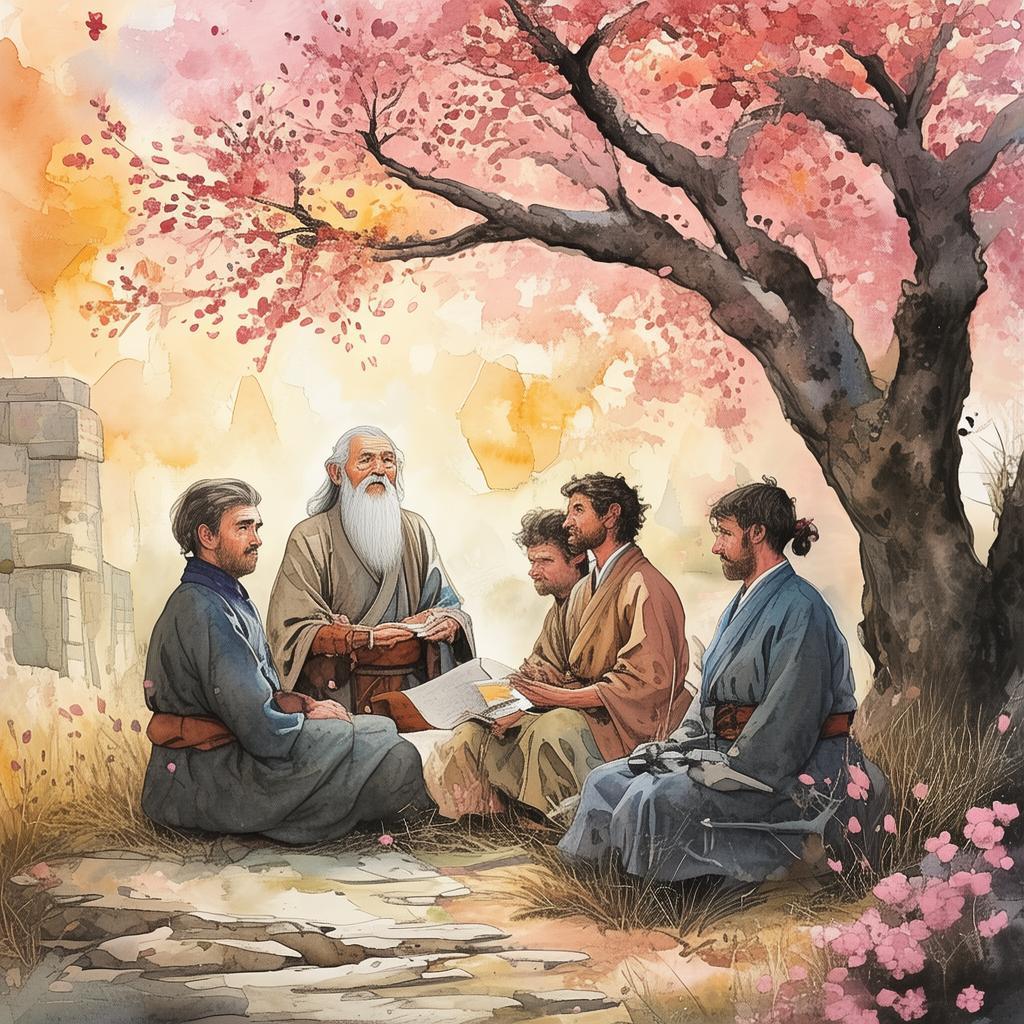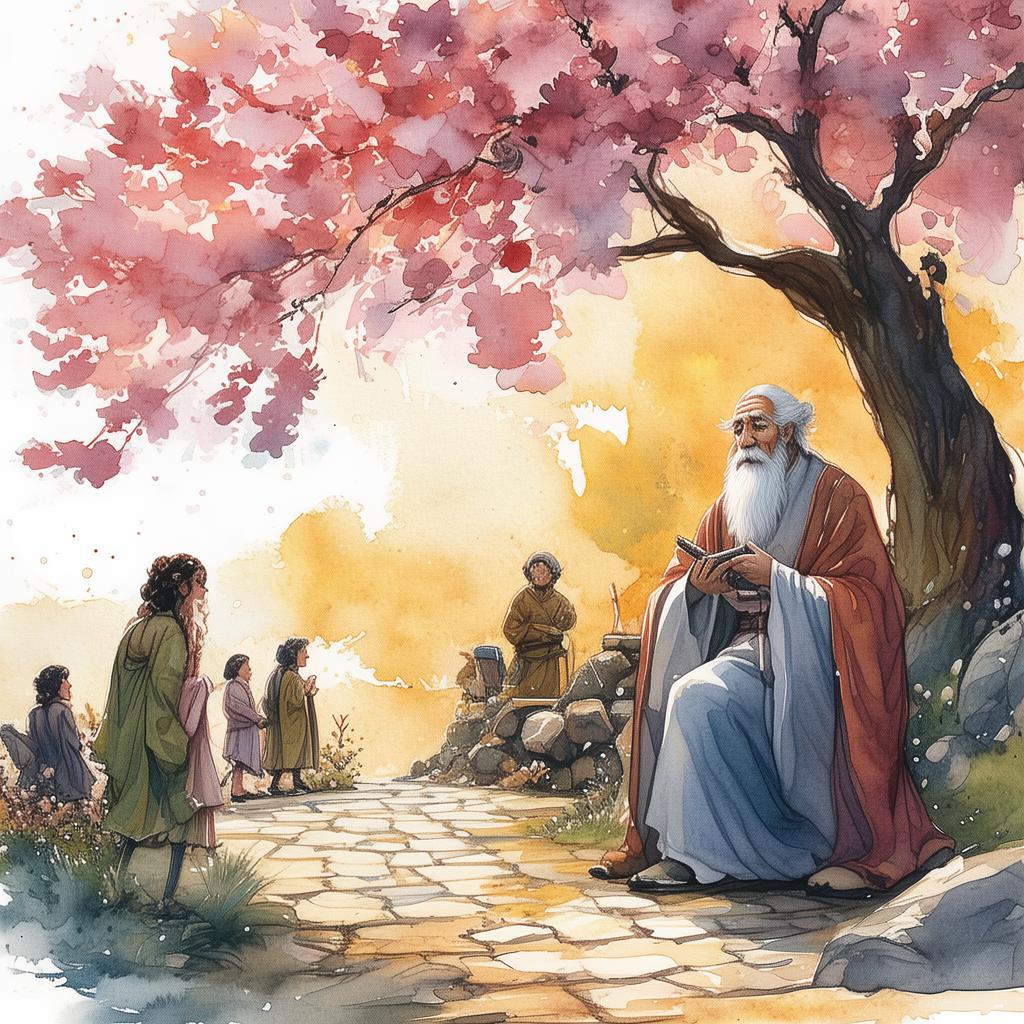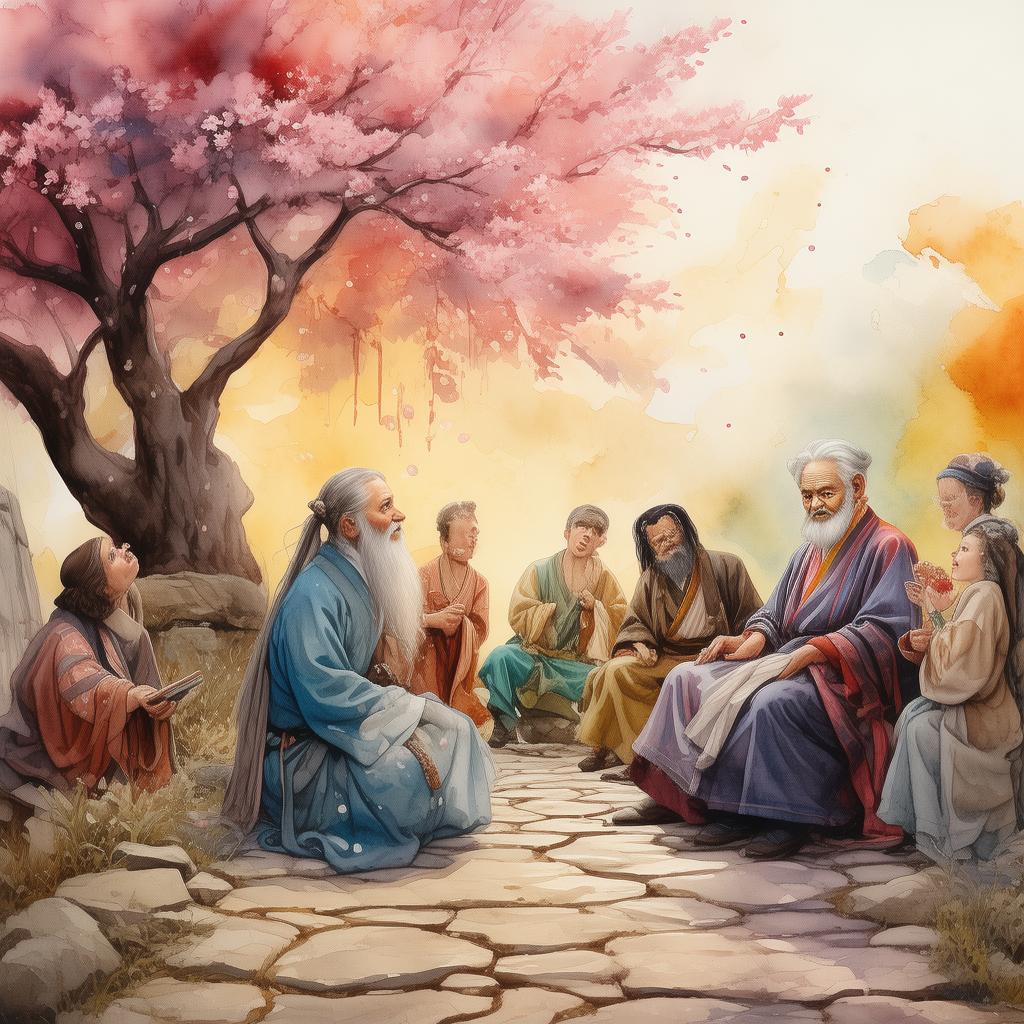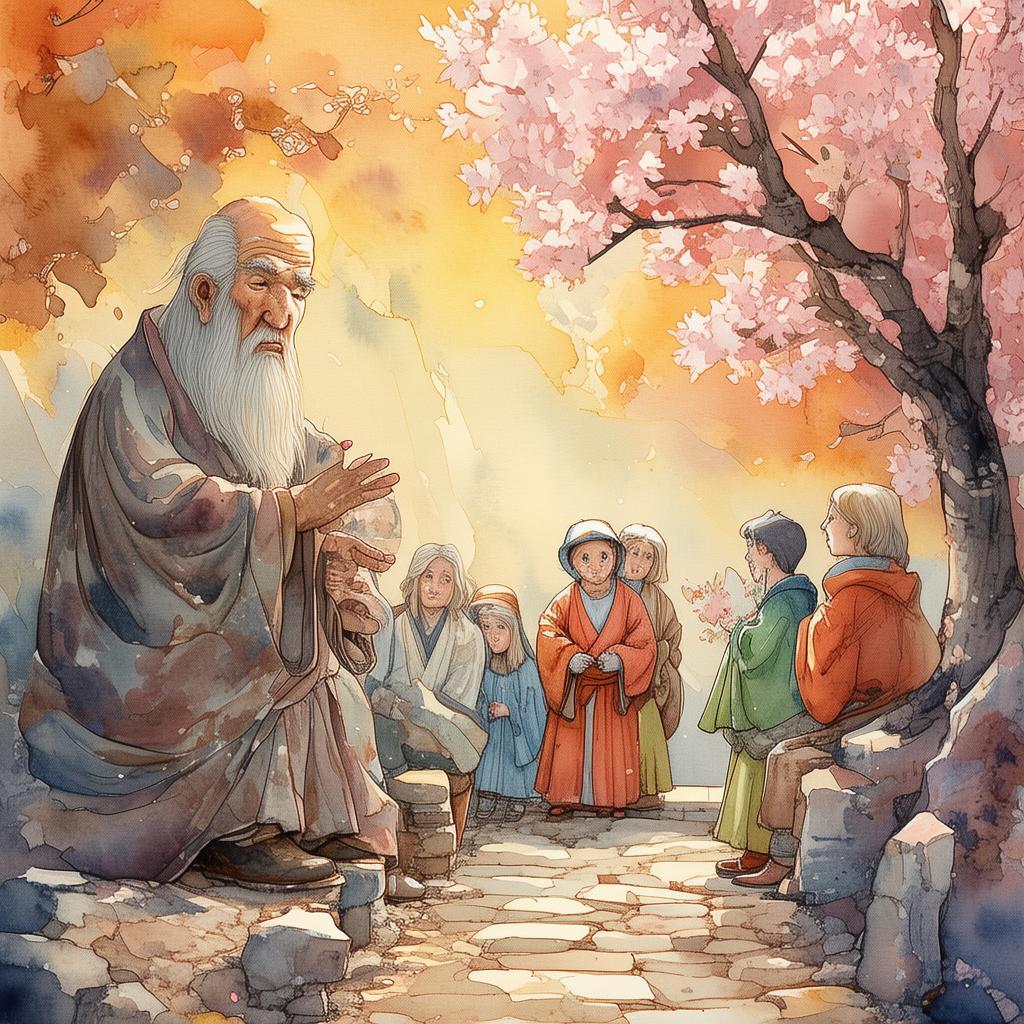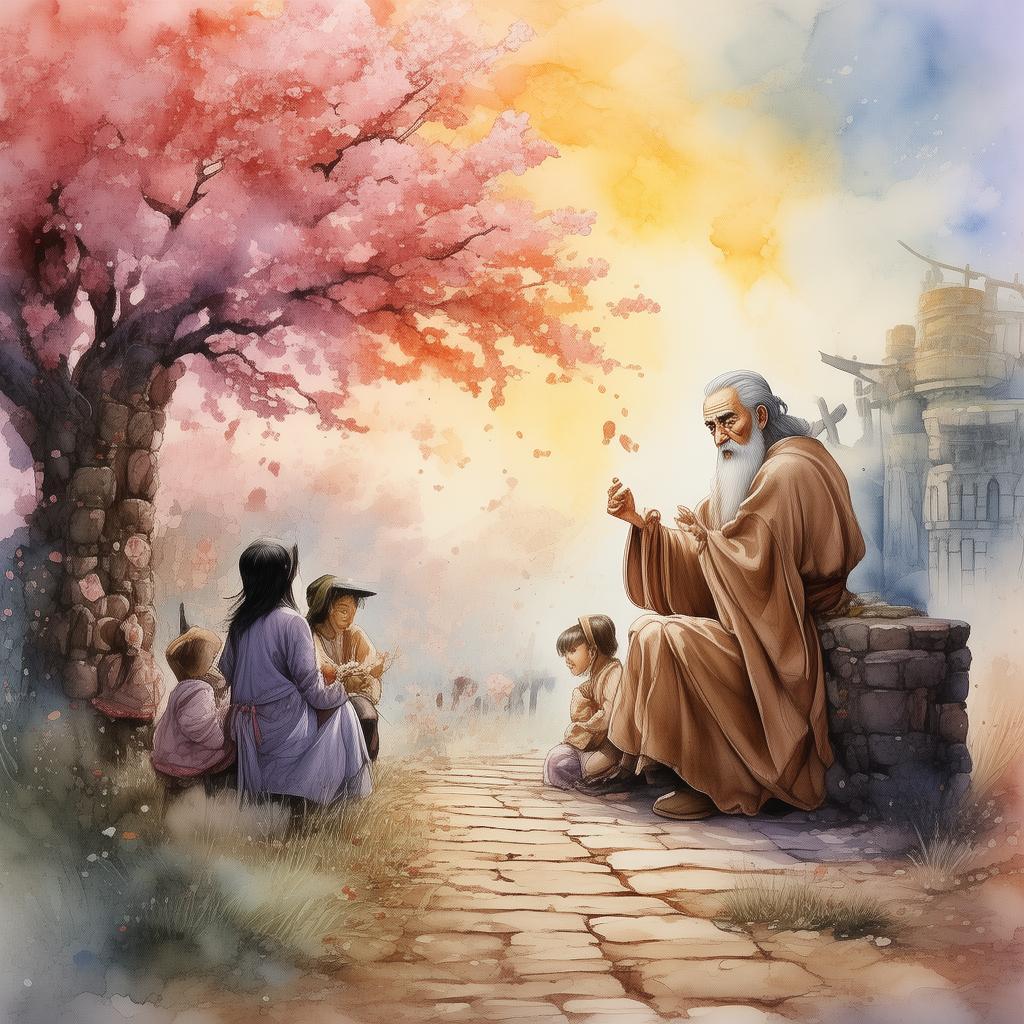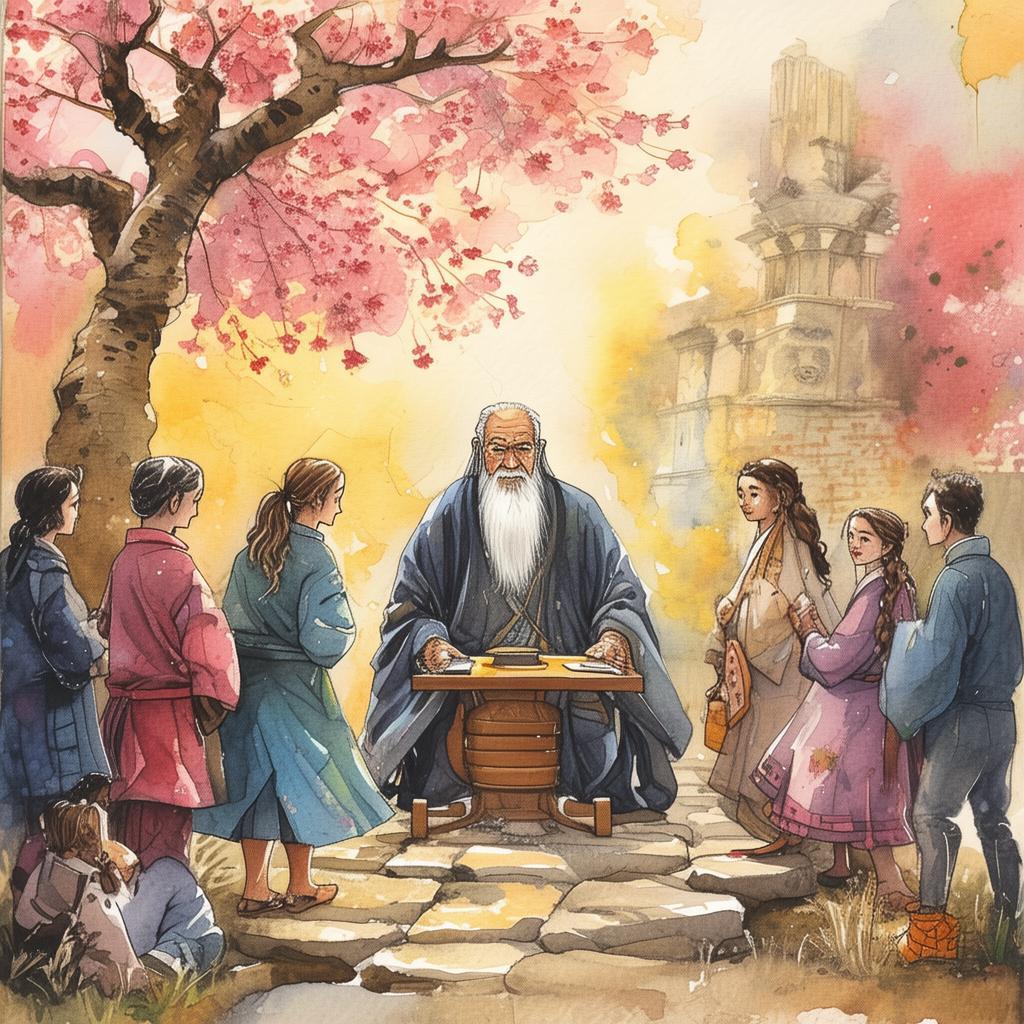Time Weavers: The Echo of Temporal Idioms
In the heart of the bustling city of Tempora, where the past, present, and future coexisted in an intricate dance, lived two time travelers: Ling and Hua. They were known to the locals as the "Time Weavers," for their ability to weave through the fabric of time with the precision of a master weaver.
One fateful day, as they wandered through the ancient Tempora Library, they stumbled upon a peculiar stamp. It was unlike any they had seen before, adorned with ancient idioms that seemed to pulse with an otherworldly energy. The stamp was inscribed with the words, "The Echo of Temporal Idioms."
Curiosity piqued, Ling and Hua decided to investigate. They knew that the idioms were not mere phrases but were imbued with the essence of time itself. Each idiom represented a moment in time, a snapshot of history that could be manipulated if one understood its true meaning.
As they delved deeper into the stamp's mysteries, they discovered that the idioms were not just words; they were gateways to different eras. With each idiom, they could travel to a specific time, witness historical events, and even influence them. But the power of the stamp was not without its price; it demanded a heavy toll on the time travelers' own existence.
The first idiom they chose was "The Past Is Prologue." With a flash of light, they found themselves in the year 1492, standing on the deck of Christopher Columbus' ship, the Santa Maria. As they watched the ship sail away, they realized that their presence could alter history. If they did not act carefully, they might prevent Columbus from discovering the New World, which would have catastrophic consequences for the future.

Determined to avoid such a paradox, Ling and Hua carefully observed the events, ensuring that history unfolded as it should. They returned to the present, their minds filled with the knowledge of how the smallest actions could ripple through time.
The next idiom was "Time Flies Like an Arrow." This took them to the year 1912, aboard the RMS Titanic. As they watched the ship sink into the icy waters, they understood the gravity of their mission. If they interfered, they could change the course of history, leading to a world where the Titanic disaster never occurred. But without the disaster, the ship's survivors would never have developed the technology that would save countless lives during World War II.
Again, Ling and Hua stood by, letting history unfold as it was meant to. They returned to the present, their resolve strengthened by the realization that they were the guardians of time, ensuring that the flow of events remained unaltered.
The third idiom, "Time Ticks Like a Clock," brought them to the year 1941, on the eve of Pearl Harbor. They watched as the Japanese planes flew overhead, and they knew that their presence could prevent the attack. However, they also understood that the attack was a catalyst for the United States to enter World War II, ultimately leading to the defeat of the Axis powers.
Ling and Hua faced a moral dilemma. They could prevent the attack, but at what cost? They decided to let history unfold as it should, ensuring that the United States would play a crucial role in the war.
As they returned to the present, they found themselves in a paradox. They had witnessed the events of the past, yet they had not interfered in a way that would alter the course of history. The stamp had shown them the importance of understanding the true meaning of temporal idioms and the delicate balance of time.
The final idiom, "Time Heals All Wounds," brought them to the year 2020, in the midst of a global pandemic. They watched as humanity struggled to overcome the crisis, and they understood that their actions in the past had shaped this future. They realized that the true power of the stamp was not in altering history but in understanding it.
With this newfound knowledge, Ling and Hua returned to their lives as Time Weavers, knowing that they had a responsibility to protect the fabric of time. They continued to travel through time, not to change history, but to learn from it, ensuring that the future would be shaped by the wisdom of the past.
And so, the story of the Time Weavers, bound by the stamp of temporal idioms, continued, a testament to the delicate balance of time and the power of understanding its true essence.
✨ Original Statement ✨
All articles published on this website (including but not limited to text, images, videos, and other content) are original or authorized for reposting and are protected by relevant laws. Without the explicit written permission of this website, no individual or organization may copy, modify, repost, or use the content for commercial purposes.
If you need to quote or cooperate, please contact this site for authorization. We reserve the right to pursue legal responsibility for any unauthorized use.
Hereby declared.
